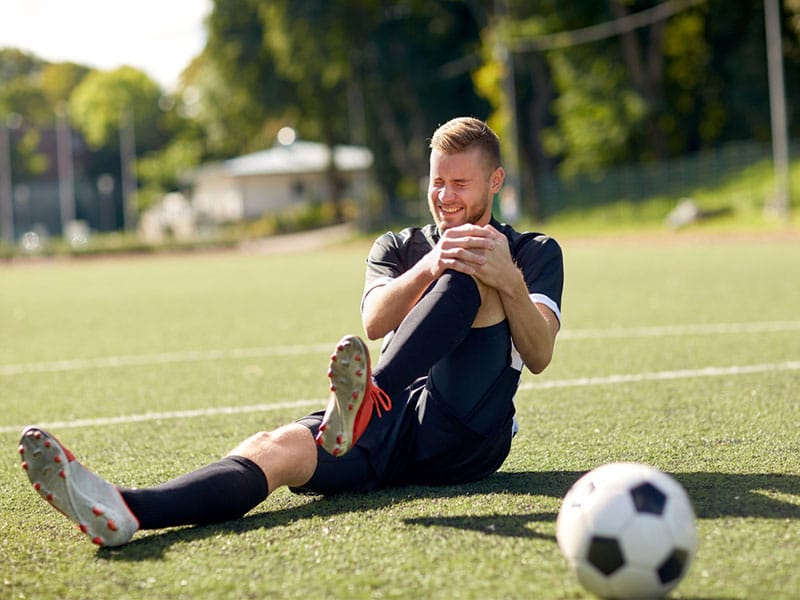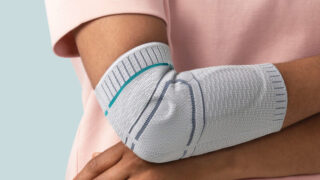Of course, we’d all prefer to avoid surgery. That’s why England- and Australia-trained orthopaedic surgeon DR ALAN CHEUNG offers a non-surgical approach to his patients as the first line of treatment for injuries like an ACL tear, and osteoarthritis. But, in some cases, medication and a referral to a physiotherapist just won’t cut it. Here, he shares three scenarios where orthopaedic surgery may be the best solution.
When you might need orthopaedic surgery in Singapore
#1 Complete ACL tear
As one of the four main ligaments that stabilise the knee, the anterior cruciate ligament (ACL) is commonly injured when turning suddenly or landing badly after a jump, in sports such as football, rugby, basketball and martial arts. Typical symptoms of this knee injury include immediate pain, knee instability and swelling.

When torn completely, the ACL does not tend to heal well, explains Dr Cheung. One solution is to surgically replace the torn ligament with a tissue graft – usually made up of hamstring tendons. This procedure is generally straightforward, with patients usually going home the same day. However, recovery time is long. In fact, it can take nine to 12 months of physiotherapy to get a patient back to playing sports after surgery for an ACL tear.
According to Dr Cheung, it’s definitely worth seeing a good physiotherapist on the recommendation of your orthopaedic surgeon, and undergoing rehab before considering orthopaedic surgery.
“This allows your knee to regain full range of movement and strength, and allows the bone bruising to settle. Some doctors have also argued that ACL reconstruction may reduce the risk of early osteoarthritis later in life.”
#2 Large meniscal tear
While this type of injury most commonly occurs during contact sports, all it takes is a sudden twist, or getting up from a squat the wrong way, to create enough force to tear the meniscus – the rubbery shock absorber that provides cushioning between your thighbone and shinbone. The result is pain, tenderness and a locking sensation.
Sometimes, a small tear can be left alone. However, Dr Cheung says that a larger tear may prevent the knee from being straightened (known as “locking”). The torn meniscus may need to be surgically repaired or trimmed away, depending on the shape and location of the tear.
Fortunately, he says that both techniques he performs for meniscal tears at International Orthopaedic Clinic are minimally invasive keyhole surgeries that generate good results. A patient may be back to sports within several months following the procedure.
#3 Osteoarthritis of the knee and hip joints
For patients with worn-out hip and knee joints, Dr Cheung usually recommends physiotherapy, painkillers and a steroid injection. However, if the pain is severe and the joint is too worn out, there may be no choice but to replace it.
In this case, he says robotic joint replacement is an extremely effective option. It can reduce pain and restore quality of life. It involves using a robotic arm to assist with surgery, and helps reduce the risk of damage to nerves, blood vessels and ligaments.
Dr Cheung says that one major advantage of this method is that it allows the orthopaedic surgeon to plan the operation in minute detail. “Using a robot can make the process more exact, reproducible and reliable. In some cases, patients can even go home on the day of surgery.”
Of course, avoiding injury in the first place is key to preventing osteoarthritis. Dr Cheung suggests undergoing an injury prevention programme, strength training and physiotherapy to reduce risk of joint injuries.
International Orthopaedic Clinic (IOC)
#05-24 Mount Elizabeth Novena Hospital
6253 7111 | WhatsApp 883 87111 | ioc-ortho.com
This article on orthopaedic surgery in Singapore first appeared in Expat Living magazine. You can purchase the latest issue or subscribe so you never miss a copy!
Like this? Read more in our Health & Fitness section.
Don't miss out on the latest events, news and
competitions by signing up to our newsletter!
By signing up, you'll receive our weekly newsletter and offers which you can update or unsubscribe to anytime.




